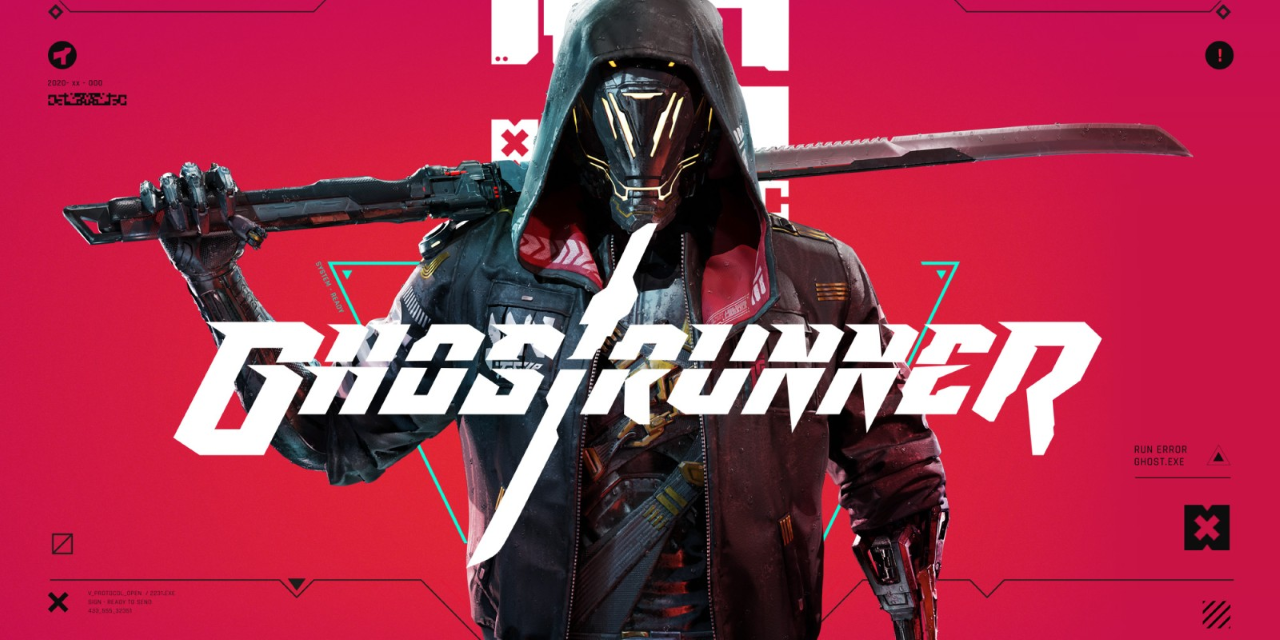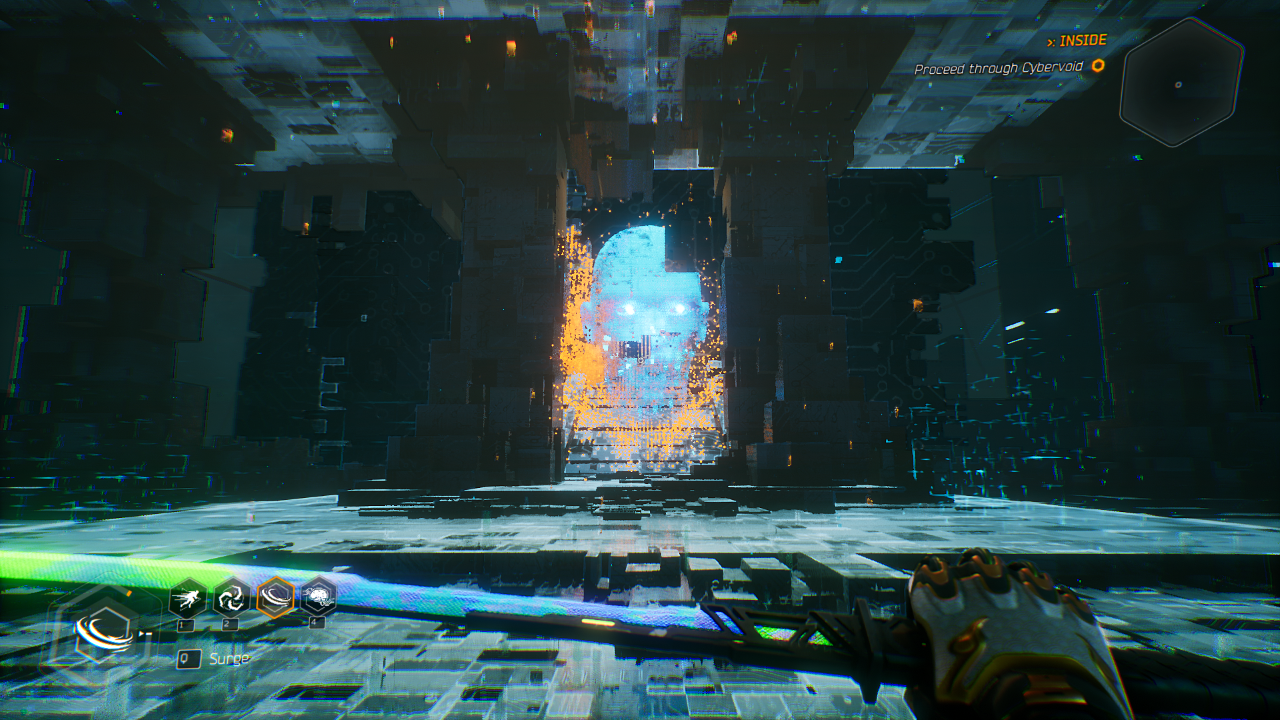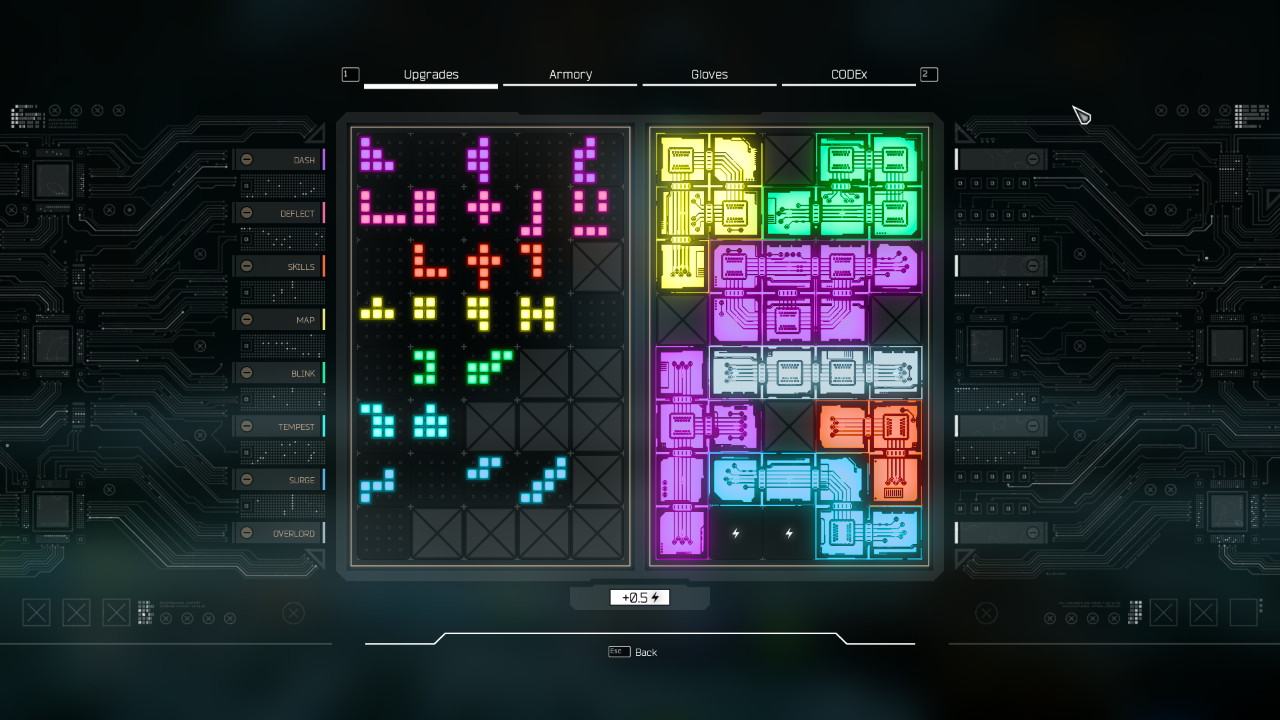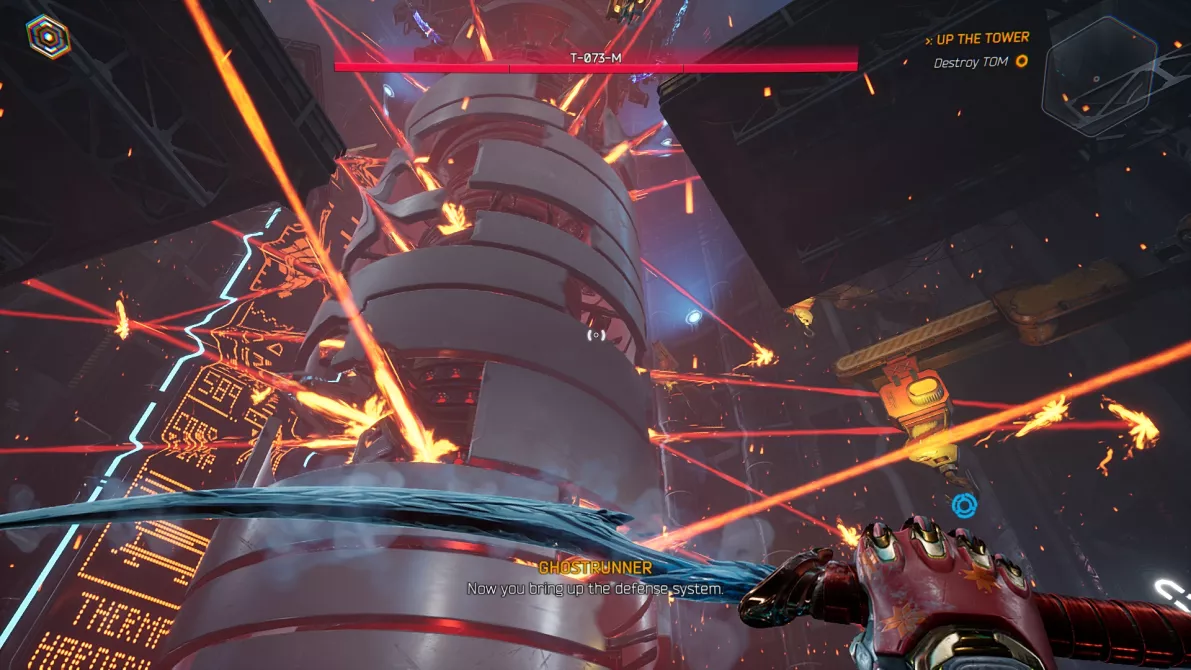Ghostrunner Review
by Jack Burke, Form VI
7 min. read — November 2, 2021

My favorite types of games are ones with speed and style at their core, and Ghostrunner is no exception. I’m not sure what I was expecting when I picked it up, but I certainly didn’t expect to like it as much as I did. You play as a katana-wielding robot called the Ghostrunner, who must slash, run, slide, and grapple his way to the top of a massive cyberpunk themed tower at the directive of a mysterious AI named the Architect. The game takes place in Dharma tower, a massive structure that serves as the last bastion of humanity in a world devastated by an apocalyptic event. At the tower’s peak is Mara, an evil figure who has dethroned the Architect and seeks to end what scraps of human life remain within the tower. So what makes this game so special in my opinion?
Before I discuss the mechanics of the game, I must warn readers that Ghostrunner, being a first person slasher game in a cyberpunk setting, does contain a mild amount of gore. It’s nowhere near games such as Doom Eternal or newer Wolfenstein entries, but it does exist. However, if you’re not a fan of gore of any kind, Ghostrunner has the option to disable it entirely. While I’m not too sure how much this affects the game since I never tried the setting myself, you should know that the option is there as you consider getting the game. With that out of the way, let’s talk about the mechanics. From the very beginning, it’s very clear that Ghostrunner wants you to maintain a consistent flow through any given room. Every jump, dash, slide, grapple, and attack feels natural and immediately chains into the next consecutive action. Every room is a challenge to find the most efficient and stylish way to clear out every enemy through a process of trial and error. The most obvious path forward was almost never the best route to take, with every room containing side paths that you wouldn’t see at first glance, but reward the player for taking them by giving them a generally more fun experience. When playing Ghostrunner, I think it’s fair to say that I spent more time running on the walls than running on the ground.
Ghostrunner has a wide range of diverse enemies, each with different tactics to defeat them. While games where all it takes is a single hit from an enemy to kill you can be frustrating, I always felt like every death was my fault, not the game’s (and for less game-design-savvy readers, that’s generally a good thing). There are two enemies that end up changing the pace of gameplay significantly that I’d like to highlight: the shield enemies and the katana enemies. The katana enemies differ from every other enemy in that while killing most enemies relies on your speed and flow through a room, the katana enemies force you to stop in your tracks and parry their attacks in order to give yourself an opening. While I’m usually not a fan of mechanics that slow you down in speed based games, these enemies didn’t feel too bad in this regard, and even felt like a nice change of pace with the satisfaction of a successful parry. However, I really didn’t enjoy the shield enemies. With a shield that covers the entire front of their body and the ability to turn around just a bit slower than you can move, I never felt like I was defeating them correctly, and their presence always seemed to break my flow. One example in particular was a small room that contained four of them at the end of a particularly tough section, where any one of their attacks hitting me would result in having to restart said section. It always felt like a mad scramble to somehow get behind one of them, while simultaneously dodging attacks from the other three. Regardless, every single room was always a treat to explore and conquer.
If you’re a fan of cyberpunk media, I have a feeling that you’ll love the setting of Ghostrunner. As previously stated, Ghostrunner takes place within the massive Dharma tower, which effectively serves as the last bastion of humanity after a nuclear disaster called the Burst. Each of the tower’s four levels provides a different experience for the player, but all of them promote that feeling of dystopian dread, with decaying machinery in the factories, trash covering the neon-lit city, the deafening silence of the exclusion zone, and the almost horror game-esque aura of the lab near the tower’s peak. Speaking of the city, train fans will be pleased to hear that Ghostrunner is home to one of my favorite train levels of all time, second only to A Hat in Time’s Nyakuza Metro area. In terms of graphics the entire game looks amazing and ran well at high settings on my mid-range PC, except for a few areas with too many of a certain type of enemy that would drop my frames per second. The other main location in the game is the Cybervoid, a mysterious network that holds tons of useful data for the Ghostrunner and the Architect to use in their quest. Each Cybervoid section contains a puzzle or minor platforming challenge of some kind, followed by a tutorial of any abilities that the player may have gained. In my personal opinion, not much would really be lost if the Cybervoid sections were removed entirely, but on the other hand the puzzles serve as a decent change of pace, and make receiving an upgrade or new ability feel slightly more rewarding. Completing a Cybervoid segment will also give the player access to more upgrades and upgrade slots. Speaking of which, the upgrade system is absolutely phenomenal. You’re given a limited amount of space and tetris piece-like upgrade blocks, and it’s up to you to figure out how to fit the upgrades that you want together. Honestly, I could spend all day just trying to find the most efficient combination, and the system also allows you to prioritize the abilities that you enjoy using the most over others.


There’s really only a few more things to note. The first is the collectibles. Ghostrunner has quite a few collectible items hidden throughout the levels, some more hidden than others. These include items that tell you more about the world of Dharma tower, audio logs from its residents, and tons of awesome looking cosmetic swords (although my personal favorites just happen to be DLC). One gripe I have about the game is how it seems to forget about certain features after using them for only a few levels. Features such as hacking parts of the environment and the Cybervoid acceleration item seem to be entirely absent from some of the later levels. It doesn’t really affect gameplay that much, but I do wonder what it would have been like if those features were also incorporated into the level design of later areas. Another thing that I’m not too happy with are the bosses. Ghostrunner contains 3 of them, and without spoiling anything, the later two are somewhat lackluster. They’re not bad per se, just not as enjoyable as the rest of the gameplay and to an extent leave something to be desired. However, the game’s first boss, who is called T-073-M, or simply Tom, is absolutely phenomenal (if not a bit frustrating). Without spoiling too much, Tom serves as an incredible test of everything you have learned within the first area, and that test is an absolute blast. Once again, I won’t go into much detail as to not spoil too much, but Tom serves his purpose incredibly well. The last thing I want to talk about is the music. It’s nothing too special, certainly no Sonic Adventure 2 or Persona 5 soundtrack, but the music certainly fits the setting, as it’s nice to have a bit of a beat to fight and parkour to. If I had to name any tracks as my favorites, I’d probably have to recommend “Let Them Know,” “The Orb,” or ‘Vendetta.”

That’s pretty much everything I have to say about Ghostrunner. For a 30-dollar price point and coming in at about 10 hours on my save file, I’d have to give the game somewhere around an 8 or a 9 out of 10. My review certainly doesn’t give the game justice, so if you have a good enough computer to handle the stunning graphics, I would more than recommend checking it out for yourself.